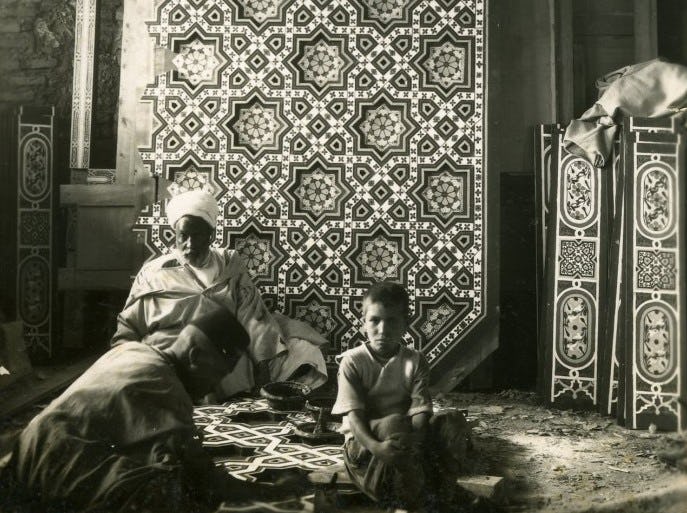Embroidered Silk Shawl (Phulkari) with Diamond Lattice Motif
Date20th century
PeriodBritish India/Princely States
MediumCotton with floss silk
DimensionsOverall: 42 x 97 in. (106.7 x 246.4cm)
ClassificationsTextiles
Credit LineCourtesy of the Doris Duke Foundation for Islamic Art
Object number85.63
DescriptionThis silk shawl, or phulkari, is densely embroidered in a lattice pattern with red, silk thread on white, cotton cloth. This type of embroidery was created by women from the Punjab region of modern day northern India or the Punjab region of Pakistan. Translated from Sanskrit, the word phulkari means “floral work” from phul (flower) and kari (work). Using a darning stitch on the reverse of the fabric, women embroidered intricate patterns using shimmering, brightly-colored silk threads called pat on strips of rough cotton cloth called khadar. The strips of cloth were sewn together and dyed with natural materials such as madder-red (rubia tinctoria), which produces red, brown, and maroon colors.
Postcolonial interest in Indian craft changed the consumption and creation of phulkaris. Following international exhibitions in Europe and North America, phulkaris were increasingly exported to London and New York where they were used as “exotic” household furnishings, such as curtains or piano covers. To meet this demand, both women and men participated in phulkari production.
On View
Not on view20th century
19th - 20th century
19th century
19th - 20th century
19th - 20th century
19th - 20th century
















